Campus
- Mississauga (UTM)
Areas of Interest
I am fascinated with the creation of instrumentation and associated chemical systems for biochemical sensing. Throughout my years as a researcher, both in academia and the biotechnology industry, I have focussed on the development and commercial implementation of optical biosensor technologies for rapid, reusable, sensitive and selective nucleic acid diagnostics. With equal passion, I enjoy chemistry education and to this end strive to share my knowledge and enthusiasm in the field of analytical and bioanalytical chemistry with our student community.
The overall aim of the research I have been involved in has been the development of chemically-selective surfaces and
associated instrumentation that together are suitable for practical application as biosensor devices. A biosensor is a device for the detection of an analyte (i.e. a target molecule of interest) that combines a biological recognition element, typically a protein or nucleic acid that is capable of selectively binding to the analyte, with a transduction element capable of converting selective binding interactions into a measureable analytical signal, as illustrated in the figure above. In particular, my work has focused on the development of fluorimetric nucleic acid biosensors that rely on the use of immobilised nucleic acid probes of well-defined sequence and organisation to detect and identify organisms (e.g. pathogenic bacteria such as Escherichia coli 0157, Salmonella typhimurium and Listeria monocytogenes), viruses (e.g. Human Papillomavirus and Influenza A virus subtype H1N1) and genetic mutations (including those for inherited diseases, such as Spinal Muscular Atrophy) through selective DNA hybridisation reactions.
A substantial subset of my research has concentrated on the exploration of nucleic acid immobilisation methods and interfacial biomolecule organisation. The resultant characterization of the interfacial binding properties of immobilised nucleic acid films has yielded tremendous insight into the physical chemistry of nucleic acid hybridisation occurring at interfaces and how the response characteristics of biosensors can be optimised by design and control of the device interface. I have also explored instrument design and have created devices suitable for routine testing and characterisation of optical biosensors. This includes a high-sensitivity analysis system based on the use of time-correlated single photon counting and a femtosecond laser in efforts to analyse nucleic acids directly from cells (without the requirement for pre-amplification) and an autonomous sensor-array sample processing and analysis instrument which is currently undergoing validation studies for commercial use in the routine analysis of dairy products for pathogens.
TEACHING
My work now focuses on application of my knowledge and multidisciplinary experience in bio-analytical chemistry, the biotechnology industry and sensor development to enhance the undergraduate chemistry learning experience at UTM. This is achieved through lecture and laboratory courses in analytical chemistry and research opportunities in the development of analytical devices, including: chemical sensors and biosensors, sensor-arrays and microarrays, microfluidic based analytical instrumentation and associated instrument control and analysis software.
From my experience in academia and industry, I know well that regardless of career paths, students with a multidisciplinary education and solid development of presentation, time-management and teamwork skills will have the highest probability for success in their careers. This has become more critical in our current economic environment where employers attempting to run businesses with limited financial resources place an increased multidisciplinary expectation on employees; a trend that will most certainly continue. As such, aspects from other disciplines (particularly molecular biology and biotechnology) are blended into the courses I provide and supported with real-world examples to demonstrate the practicality of the material being presented. Opportunities for the development of presentation, time-management and teamwork skills are intrinsic components of the courses and research projects that I am involved with.


